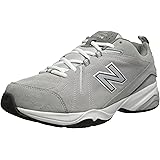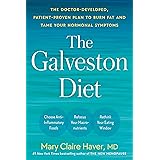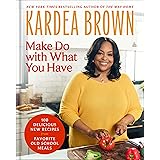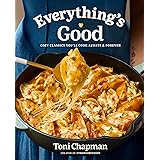Many people dream of pulling a warm, crusty loaf of bread straight from their oven, but the thought of complex kneading, precise timing, and seemingly endless steps often makes it feel like an impossible feat. Traditional bread making can indeed be a commitment, requiring patience and a good amount of arm strength. However, what if there was a way to achieve that incredible homemade bread experience with minimal effort, perfect for even the busiest schedules or beginner bakers?
The good news is, there is! The video above demonstrates an absolutely revolutionary method for making the easiest homemade bread, one that truly lives up to its “lazy” reputation. This approach strips away all the intimidation, proving that delicious, artisanal-quality bread is well within your reach. Let’s delve deeper into how this fantastic no-knead bread recipe works, offering you more insights and tips to ensure your baking success every single time.
Embracing the Simplicity: The No-Knead Revolution for Homemade Bread
The core philosophy behind this recipe is simplicity itself. Forget about spending hours developing gluten with strenuous kneading. This method leverages time and hydration to do the hard work for you, making it an incredibly accessible way to enjoy fresh bread. It’s a game-changer for anyone who has ever felt overwhelmed by baking.
This effortless technique relies on a long fermentation process, where the yeast slowly works its magic, breaking down starches and developing complex flavors. Furthermore, this extended resting time naturally builds the gluten structure in the dough. Imagine if you could just mix a few ingredients, walk away, and come back to a perfectly prepared dough ready for baking – with this recipe, you can!
The Essential Ingredients for Your Easiest Homemade Bread
As highlighted in the video, you only need a handful of basic ingredients to bring this magical loaf to life. While the video mentions three ingredients, a complete list includes four kitchen staples: bread flour, sea salt, fast-acting yeast, and warm water. Each component plays a crucial role in creating a flavorful and perfectly textured loaf.
Understanding Your Key Components:
- Bread Flour: This is not just any flour. Bread flour contains a higher protein content compared to all-purpose flour, which is vital for developing strong gluten networks. This strength allows the bread to rise beautifully and gives it that desirable chewy texture.
- Fast-Acting Yeast: Often called instant yeast, this variety doesn’t require prior proofing in water, simplifying the process even further. It’s designed to be mixed directly with dry ingredients, springing to life once warm water is added.
- Sea Salt: Beyond just flavor, salt is indispensable in bread making. It controls the yeast’s activity, preventing it from fermenting too quickly, and also strengthens the gluten structure. A good quality sea salt will enhance the bread’s taste.
- Warm Water: The temperature of your water is critical. Warm water (around 105-115°F or 40-46°C) activates the yeast, allowing it to start feasting on the sugars in the flour. Water that’s too hot can kill the yeast, while water that’s too cold will slow its activity to a crawl.
The No-Fuss Mixing and Proving Process
Once you have your ingredients ready, the initial steps are remarkably straightforward. You simply combine the dry ingredients (bread flour, sea salt, and fast-acting yeast) in a large bowl, ensuring they are well mixed. This initial stir helps distribute the yeast and salt evenly throughout the flour.
Next, introduce the warm water, mixing until all the flour is hydrated and you have a shaggy, somewhat sticky dough. There’s no need for vigorous kneading here; just make sure there are no dry pockets of flour remaining. This simple mix kickstarts the incredible transformation that occurs during the proving stage. This truly is the easiest homemade bread you’ll ever bake, saving you precious time and effort.
The All-Important First Prove: Letting Time Do the Work
After your ingredients are combined, cover the bowl and let the dough prove for an impressive two to three hours at room temperature. This extended proving period is where the magic of the no-knead method truly shines. During this time, the yeast consumes the sugars in the flour, producing carbon dioxide gas that creates air pockets, which gives bread its open, airy texture.
Furthermore, as the dough rests, the gluten strands naturally align and strengthen without any intervention from you. You’ll know your dough is ready when it has significantly increased in volume, is bubbly on the surface, and feels “wobbly like jelly” when gently shaken, as described in the video. Imagine the satisfaction of knowing your bread is actively preparing itself while you attend to other tasks!
Prepping and Shaping Your Lazy Bread Recipe
Once your dough has completed its long, luxurious first prove, it’s time to prepare it for baking. The video suggests using a baking tray or a large pot, like a Dutch oven or a sturdy oven-safe pot. Placing your chosen baking vessel into the oven for 15 minutes as the oven preheats is a crucial step. This preheating ensures the dough experiences an immediate burst of heat, which helps it rise quickly (oven spring) and develop a crisp crust.
Carefully remove the hot tray or pot from the oven. Then, gently flour a clean surface. Scrape your incredibly wobbly, sticky dough onto this floured surface. The shaping process is incredibly simple: gently turn the dough, tucking its edges underneath to create a taut, rounded top. This gentle shaping helps create surface tension, which contributes to a good rise and a beautiful loaf. Don’t worry about perfection; this is a very forgiving dough.
The Quick Second Prove and Scoring
After shaping, cover your dough with a bowl and let it prove for another 15 minutes. This shorter second prove, known as a ‘bench rest,’ allows the gluten to relax slightly, making it easier to score and encouraging a final burst of rising in the oven. It’s a brief but important pause before the final bake.
Before baking, it’s time to score your dough. Flour the surface again lightly, then use a very sharp knife, razor blade, or bread lame to make a few shallow cuts (scores) on the top of the dough. Scoring serves several purposes: it guides the bread’s expansion in the oven, preventing uncontrolled cracking, and it also adds a beautiful, rustic aesthetic to your finished loaf. These simple marks transform your lazy bread recipe into something truly artisanal.
Achieving the Perfect Crust: The Steam Effect
A hallmark of great homemade bread is a beautiful, crispy crust. The video provides an ingenious solution for achieving this without a Dutch oven, which can be an expensive piece of equipment. The secret lies in creating a steamy environment in your oven.
To do this, place your scored dough onto baking paper and transfer it to your preheated pot or tray. Crucially, place a separate oven-safe tray or bowl with boiling water into the oven alongside your bread. This boiling water generates steam, which keeps the crust moist initially, allowing the bread to expand fully before the crust sets. Imagine the golden-brown crust and airy interior you’re about to create!
Baking to Perfection and the Essential Cooling Phase
Bake your bread in the preheated oven with the steam setup for approximately 40 minutes. The exact timing can vary slightly depending on your oven, so keep an eye on it. You’re looking for a deep golden-brown crust and a hollow sound when you tap the bottom of the loaf. This indicates that your easiest homemade bread is fully cooked through.
Once baked, immediately remove your bread from the oven and transfer it to a cooling rack. This next step, though tempting to skip, is absolutely critical: let the bread cool for at least 30 minutes. During this time, the internal temperature of the bread slowly stabilizes, allowing the starches and gluten to set properly. Cutting into hot bread too soon can result in a gummy texture. Patience here will be rewarded with the perfect crumb and crust that makes this the ultimate lazy bread recipe.











